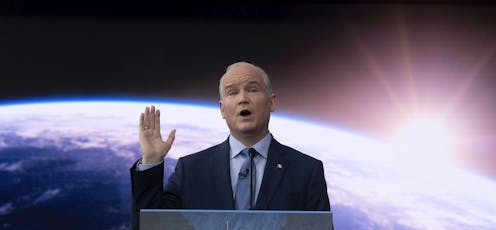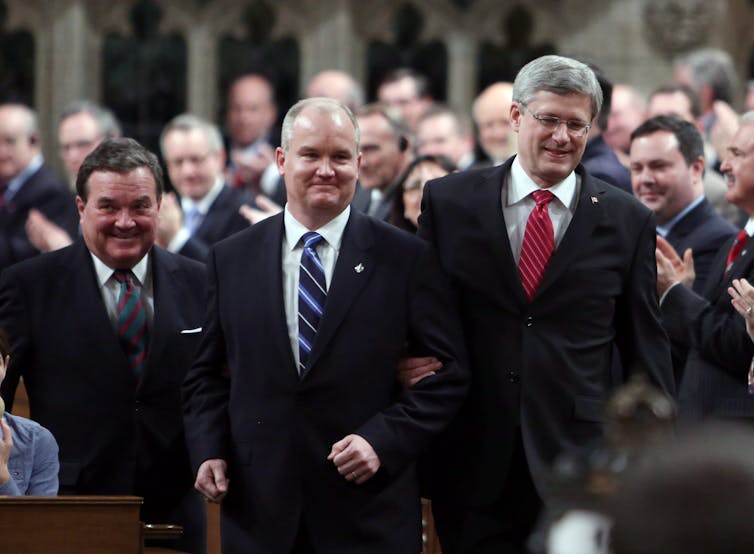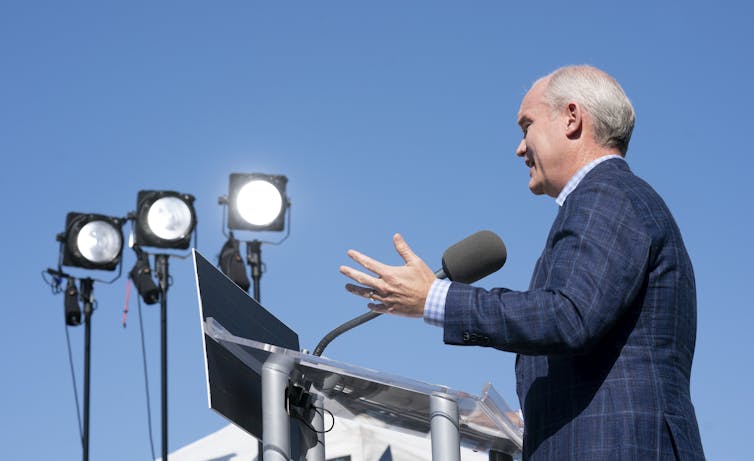
When the dust settled and the caucus votes had been counted, 73 MPs from the Conservative Party of Canada voted to oust their leader, Erin O'Toole.
After weeks of speculation about whether or when it would happen, the vote proved a quick and decisive repudiation. Just what the rejection was about, however, will be the subject of debate both inside and outside the party as it moves to select its third leader in less than five years.
For some, the vote will be seen as a rejection of O'Toole’s very public attempts to shift the party towards a more moderate stance on a range of issues, in a bid to expand the pool of potential voters.
Not the ‘Liberal lite’ party
For those critics, the party must stop trying to be some version of “Liberal lite” and plant its flag firmly on issues supported by the party’s most fervent, and typically right-leaning, supporters.
Such measures include unwinding restrictions related to the pandemic, rejecting a carbon tax, standing up for social conservative values, and more.
For others, including many who agreed with O'Toole’s conclusion that the party had to moderate in order to win back the urban supporters it had lost to the Liberals, the vote may seem instead a rejection of the fitful style in which O'Toole attempted to remake the party.

Shift to the centre
After winning the leadership with a campaign based on a commitment to “true blue” values, O'Toole began to tack to the centre with his comments.
It was reminiscent of an American Republican presidential candidates, like John McCain and Mitt Romney, moderating their positions during the general election after winning the support of their right-wing base in the primaries. But while such activity is the norm in the United States for Republicans and Democrats alike, it struck many in Canada as disingenuous.
At the heart of the critique for most Conservative Party supporters, however, is the party’s showing in September 2021 federal election. In the space of a five-week election campaign, O'Toole updated and reversed positions repeatedly.
Reversed course
Most of the changes were intended to further moderate the party, like when he suggested the Liberal carbon tax might persist under a Conservative Party government, or when he reversed course on a Conservative platform pledge to end a ban on some assault-style weapons.
The strategy was clear: win over disgruntled Conservative supporters who had migrated toward the Liberals while hoping to hold on to as much of the far right wing of the party as possible.
For the first two weeks of the campaign, the strategy appeared to be working, as the Conservatives erased the pre-election Liberal lead. Through the first week of September, O'Toole appeared to pull ahead. One enthusiastic pollster described O'Toole as a “political freight train.”
That momentum eventually stalled however, even as the policy reversals increased in frequency. In the end, even though the CPC once again won the popular vote, it finished a distant second to the Liberals in seats as Justin Trudeau was returned to power with a minority government.

Accused of flip-flopping
For critics in the party, the flip-flopping throughout O'Toole’s leadership created the impression of a leader willing to say and do anything to be elected. As one caucus member described it, the reversals were the “elephant in the room” and should have been a focus of the party’s official post-mortem report.
At the same time, O'Toole’s attempts to expand the tent and move the party to the centre alienated many in the more conservative wing of the party. Many of the loudest and most public post-election critiques of O'Toole’s leadership, in fact, came from social conservative groups.
Ironically, in the months since the election, O'Toole had to make additional course corrections to mollify his opponents within the party.
After initially agreeing to COVID-19 containment measures, he subsequently felt compelled to voice opposition to a vaccine mandate for MPs entering the House of Commons.
As the Omicron variant tore through provinces across the country, O'Toole supported exemptions for the unvaccinated even as polling continues to suggest most Canadians were less tolerant of those who wouldn’t get jabbed.
A party divided
While the party united sufficiently to expel O'Toole, it remains unclear what else its members can agree upon. In his departing remarks, O'Toole issued a warning that the country faced a dire moment of division. At present, however, it’s the party that he led that’s bitterly divided.
Candice Bergen, a right-wing member of the party, has been named interim leader in a possible signal of what direction the Conservative caucus is heading.
Throughout his time as leader, O'Toole continually tried to ride two horses going in different directions. No leader, however adept, can indefinitely look graceful doing that. The endless reversals that were a hallmark of his leadership were the inevitable result.
Whoever follows him in the role will have to grapple with those same divisions, and face the same choice.
The leadership race will certainly feature would-be successors planting flags on either side of the fault line dividing the party, but when the dust settles once more, the next Conservative leader will face the same unpalatable choices — and the same seemingly unbridgeable divide.
Stewart Prest does not work for, consult, own shares in or receive funding from any company or organisation that would benefit from this article, and has disclosed no relevant affiliations beyond their academic appointment.
This article was originally published on The Conversation. Read the original article.







